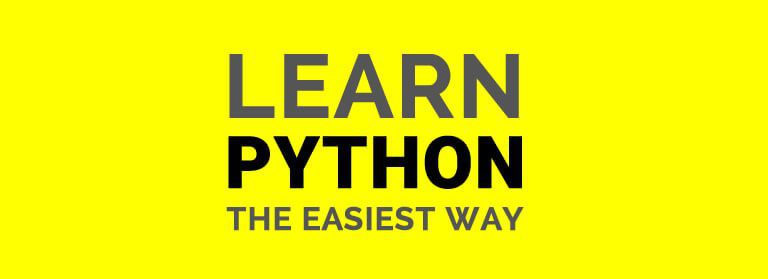Learn Python With My No.1 and Best Selling Python Course


Why should you Learn Python?
Learn Python: Embarking on a coding journey often begins with a crucial decision: choosing the right programming language. For many, the answer is clear—Learn Python. In this comprehensive guide, we’ll delve into the reasons why learning Python is a valuable endeavor, explore the resources available for mastering Python, and showcase the diverse applications of this versatile language in the tech world.
Why should you Learn Python? Lets find out the reasons below:
Ease of Learning:
One of the ket aspect to Learn Python is its simplicity. Python is renowned for its simplicity, readability, and beginner-friendly syntax. Learning Python is like taking a stroll through a well-organized park—with each step, the path becomes clearer. The straightforward syntax and use of indentation for code blocks make Python an ideal choice for those just starting in the world of programming.
Versatility:
A keyword that resonates strongly with Python is “versatility.” This language is a multifaceted tool that adapts seamlessly to various domains. Whether you’re interested in web development, data science, artificial intelligence, or automation, Python is your go-to language. Its adaptability allows programmers to transition effortlessly between projects and explore a spectrum of career paths.
Community Support:
The Python community is a vibrant and supportive ecosystem that embraces learners at every level. The communal spirit is palpable, with experienced developers readily sharing knowledge and insights. Online forums like Stack Overflow and Reddit’s Python community become invaluable resources, providing answers to queries and fostering a sense of camaraderie among learners.
Abundance of Learning Resources:
A crucial aspect of mastering Python is the plethora of learning resources available. From interactive tutorials to comprehensive textbooks, aspiring programmers have a buffet of options. Platforms like Codecademy, Coursera, and edX offer courses tailored for beginners. W3Schools and Real Python provide extensive documentation, offering practical examples and reinforcing the learning process.
Getting Started: Learn Python Step by Step
Interactive Learning Platforms:
Interactive learning platforms are the playgrounds where aspiring Python developers can hone their skills. Codecademy’s Python course, for example, provides an immersive coding environment. These platforms, marked by their immediacy of feedback, enable learners to reinforce their understanding through active engagement with Python concepts.
Official Python Documentation makes it easy to Learn Python:
Navigating the official Python documentation is a skill every programmer should cultivate. The documentation not only elucidates the language’s syntax and features but also serves as a practical guide with examples. Learning to leverage this resource effectively is akin to acquiring a map that guides programmers through the intricacies of Python.
Project-Based Learning:
Hands-on projects are the crucible where theoretical knowledge transforms into practical skills. Whether it’s crafting a web scraper, developing a simple game, or automating a task, real-world projects offer a tangible outcome. Platforms like GitHub provide spaces for sharing, collaborating, and showcasing Python projects, creating a dynamic learning ecosystem.
Online Courses and Certifications:
Structured courses and certifications are invaluable for those seeking a more formalized learning path. Coursera offers Python courses from top universities and organizations, allowing learners to earn certificates that validate their skills. These certifications become valuable assets in the pursuit of employment or further education.
Learn Python in Action: Real-World Applications
Web Development with Django and Flask:
Python’s prowess extends to web development which makes is it appealong to Learn Python, where frameworks like Django and Flask take center stage. Django, with its high-level approach, emphasizes efficiency and maintainability by adhering to the “don’t repeat yourself” (DRY) principle. Flask, a lightweight counterpart, offers flexibility and modularity, making it ideal for small to medium-sized projects.
Data Science and Analytics:
Python is the lingua franca of data science and analytics. Libraries like NumPy, Pandas, and Matplotlib empower professionals to perform intricate data manipulations, statistical analyses, and data visualizations. Jupyter Notebooks, an interactive computing environment, enhance the data science workflow by seamlessly integrating code, text, and visualizations.
Machine Learning and Artificial Intelligence:
Python’s simplicity and robust libraries make it a stalwart in machine learning and artificial intelligence. TensorFlow and PyTorch, two major frameworks, leverage Python’s capabilities. Whether developing image recognition algorithms, natural language processing models, or recommendation systems, Python provides the tools and community support needed for success.
Automation and Scripting:
Python’s adaptability shines in the realms of automation and scripting. From simple scripts to complex automation workflows, Python’s modules, such as os and shutil, facilitate interactions with the operating system. The requests library streamlines web scraping and API interactions, showcasing Python’s versatility in tackling diverse tasks.
Game Development with Pygame:
Python, though not the primary language for AAA games, has found its niche in game development. The Pygame library, built on the Simple DirectMedia Layer (SDL), provides tools for creating 2D games. For indie game developers and those prototyping game ideas, Python proves to be a valuable asset.
Networking and Cybersecurity, a key reason to Learn Python:
Python’s simplicity and extensive libraries make it a preferred language for networking and cybersecurity tasks. The Scapy framework, for example, facilitates the crafting and decoding of network packets, contributing to network analysis. Python’s readability and seamless integration with cybersecurity tools bolster its standing in this domain.
Desktop GUI Applications with Tkinter:
Python extends its reach to desktop graphical user interface (GUI) applications. The Tkinter library, bundled with Python, simplifies the creation of interactive desktop applications. While not as feature-rich as some GUI frameworks, Tkinter offers a straightforward path for developers seeking to build applications with graphical interfaces.
The Python Odyssey
The journey to Learn Python is a transformative odyssey in the world of programming. Versatility, and real-world applications. Whether you’re a novice taking the initial steps into coding or a seasoned developer expanding your skill set, Python is a language that promises not only to be learned but to be mastered. So, seize the opportunity, immerse yourself in the Pythonic realm, and witness the unfolding of your programming potential. The world of Python awaits—ready to be unlocked and explored.







Responses